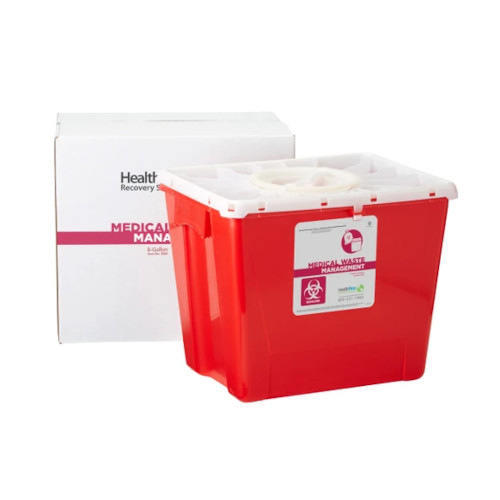Exploring Different Waste Disposal Options for a Cleaner Environment
In the quest of a cleaner environment, the management of waste disposal has arised as a crucial focal factor for lasting advancement. With a wide range of waste disposal options available, ranging from standard garbage dump techniques to innovative waste-to-energy modern technologies, the selection of exactly how we handle our waste has far-reaching implications for our earth's health.
Recycling Approaches
Applying reliable reusing approaches is critical in minimizing waste and promoting sustainability in our setting. Reusing entails the process of converting waste materials right into reusable items to prevent unnecessary disposal. Among the most typical recycling approaches is material recuperation, where materials like paper, glass, steel, and plastic are accumulated, arranged, and processed to produce brand-new items. This process not only saves natural deposits however additionally reduces energy usage and greenhouse gas exhausts connected with producing brand-new products from square one.
An additional vital recycling approach is composting, which involves breaking down natural waste like food scraps and backyard trimmings right into nutrient-rich dirt. By incorporating these different recycling approaches into our waste management practices, we can dramatically decrease our ecological footprint and move in the direction of an extra sustainable future.

Composting Techniques
Reliable waste administration practices, such as reusing techniques, lead the way for a cleaner atmosphere, and currently, moving the focus to 'Composting Techniques', we check out sustainable means to decompose organic waste for ecological advantage. medical waste disposal.
Composting is a natural process that changes natural waste, like food scraps and lawn trimmings, right into a nutrient-rich soil change. The secret to successful composting hinges on developing the right balance of green products, such as fruit and vegetable scraps, and brownish products, like dried out leaves and twigs. These materials break down with the aid of microorganisms, breaking down the waste into beneficial garden compost.
There are various composting techniques offered to fit various requirements. Standard yard composting entails layering natural products in a container or heap and routinely turning the mix to aerate it. Vermicomposting, on the other hand, uses worms to break down raw material right into garden compost (click here). For those with minimal space, interior composting systems give a hassle-free remedy. By utilizing composting techniques, we can reduce the amount of waste sent to landfills while creating a useful item for enhancing dirt and sustaining plant growth.
Incineration Advantages And Disadvantages
Incineration, as a waste disposal method, provides both benefits and drawbacks that warrant careful factor to consider in the world of sustainable waste monitoring practices. On the favorable side, incineration can considerably lower the volume of waste, minimizing the requirement for land fill space and potentially lowering greenhouse gas exhausts.
In addition, the high first financial investment and functional expenses of incineration facilities position economic difficulties, making it a less cost-effective alternative contrasted to various other waste monitoring techniques. Cautious tracking and regulation are vital to reduce these adverse influences and maximize the advantages of incineration as part of a comprehensive waste management strategy.
Land Fill Monitoring Approaches
Garbage dumps play a critical role in waste administration and ecological preservation by supplying a control system for the disposal of solid waste products. By compacting the waste, the quantity is lowered, permitting for more waste to be accommodated over time.
Furthermore, the implementation of day-to-day cover methods is visit their website important in reducing odors, stopping litter, and lowering the destination of insects. Covering the disposed waste at the end of daily assists to contain smells and avoid potential ecological contamination. Additionally, the surveillance of garbage dump gas emissions and leachate degrees is critical in making sure that environmental requirements are fulfilled and that any possible threats to surrounding ecosystems are decreased.

Waste-to-Energy Technologies
One of the ingenious techniques to throw away management includes harnessing Waste-to-Energy innovations to convert strong waste into functional power resources. Waste-to-Energy (WtE) innovations incorporate a variety of processes that intend to draw out power from waste materials with thermal, chemical, or biological ways. This conversion process not only lowers the volume of waste that finishes up in land fills yet additionally creates useful energy resources such as electrical power, warm, or biofuels.
Incineration entails burning waste at high temperature levels to generate warmth and electrical energy. Gasification converts waste right into a syngas, which can be utilized for power generation or chemical manufacturing.
Applying Waste-to-Energy innovations can aid minimize ecological problems connected with typical waste disposal approaches while concurrently offering an eco-friendly energy source. Careful factor to consider must be provided to emissions control and making sure the sustainability of feedstock products for these innovations to be truly valuable for a cleaner environment.

Final Thought
Finally, checking out numerous waste disposal alternatives such as recycling, composting, incineration, garbage dump monitoring, and waste-to-energy technologies is crucial for promoting a cleaner atmosphere - click here. Each method has its very own benefits and obstacles, but by using a mix of these approaches, we can work towards lowering the amount of waste that ends up in garbage dumps and inevitably add to an extra lasting future for generations to come
With a plethora of waste disposal choices available, varying from typical land fill approaches to innovative waste-to-energy technologies, the option of just how we manage our waste has far-ranging ramifications for our world's health. medical waste removal service.Incineration, as a waste disposal approach, offers both advantages and drawbacks that warrant mindful factor to consider in the world of lasting waste monitoring techniques.Garbage dumps play a critical duty in waste administration and environmental conservation by offering a containment system for the disposal of solid waste materials. By condensing the waste, the quantity is decreased, enabling for more waste to be accommodated over time
One of the innovative approaches to throw away monitoring includes taking advantage of Waste-to-Energy innovations to convert solid waste right into functional energy sources.
Comments on “Browsing Security: The Essential Guide to Medical Waste Disposal Best Practices”